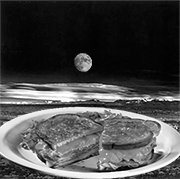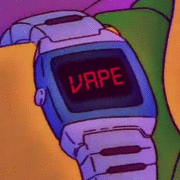|
Used HC-110 for the first time tonight with some T-MAX 3200. Didn't measure anything accurately because it was like 15.9ml developer to 496.1ml water or something and nobody got time for that. It was fine. Negatives came out fine. Developing film is easy and fine. You have to actively work at it to screw up.
|
|
|
|

|
| # ? May 11, 2024 10:14 |
|
I started out with HC-110 as well. It does seem pretty forgiving. On a related note, the first few rolls of B&W I processed I used some of my C-41 technique, i.e. periodic inversions after the initial agitation. I realized after the fact that only agitation is called for, and I think I see why, as those negatives did seem to turn out relatively grainy and contrast-y.
|
|
|
|
I remember that I once thought I could avoid the red halation glow with Cinestill 800 as long as I was just photographing tungsten light sources.   That didn't end up being the case. President Beep posted:I started out with HC-110 as well. It does seem pretty forgiving. Is there really much difference between 'agitation' (spinning the reels) and gentle inversion? I've always used inversion, mostly because when I first started doing home development I didn't trust my knockoff Patterson tank to be light-tight without its top lid. I don't generally find my results too grainy. But I mostly shoot Delta 100 (RIP Acros) so the grain isn't especially pronounced anyway.
|
|
|
|
How you move the fluid around doesn't matter as long as you move it around enough to ensure fresh developer gets to the film. I don't know if spinning the reels in a Paterson tank would be as effective as inversions give the film is wound in a spiral with little space between the coils but if the negatives look okay when finished it doesn't really matter. I'm no expert on what effects are going on inside the tank other than "silver halide reducing to metallic silver" but I don't think agitation method or frequency has any real effect on visible grain as long as enough fresh developer is soaked into the emulsion at a sufficient enough rate to keep the reaction going to an acceptable contrast level. Edit: Looking at those negatives I just developed and all the three stop brackets (0, -1, +1) look exactly the same. Of course they do because I was controlling the exposure with aperture on an aperture priority Pentax ME Super and not the manual Pentax MX my brain apparently thought I was using Sauer fucked around with this message at 03:41 on Jan 14, 2019 |
|
|
|
To be honest, Iím very new at film, so my depth and breadth of knowledge is really limited. If you look upthread though, youíll see a portrait I took shot with HP5+ (agitation only) and an earlier landscape shot with FP4+ 125 (gentle inversions following initial 30 second agitation). To me, the portrait seems less grainy with less contrast. At first I thought the landscape looked grainier than expected because I cropped it in post, but as I developed a few more rolls that turned out smoother with more subtle shading I began to suspect my initial technique.
|
|
|
|
Yeah I'm hardly an expert at this either but folks who say gentle agitation leads to less grain makes me think gentle agitation leads to under developed negatives where the grain is not as visible. There's probably some definitive thread on Photrio with age'd wise people who can tell us for sure.
|
|
|
|
You may have a point. I suppose thatís why stand developing involves such long dev times.
|
|
|
|
no that's because you'er only using like 5ml of developer in the dual reel tank instead of a normal amount
|
|
|
|
Ah, got ya.
|
|
|
|
 1064 1064
|
|
|
|
DSLR scanning T-Max 3200 is very easy because the sensor sees the grain as giant boulders that are easy to focus on. Not really a fan of how it looks when scanned but its wonderful when printed in an enlarger. I really wish they made this film in 120 format. Not to fond of Delta. 
|
|
|
|
SMERSH Mouth posted:Is there really much difference between 'agitation' (spinning the reels) and gentle inversion? I've always used inversion, mostly because when I first started doing home development I didn't trust my knockoff Patterson tank to be light-tight without its top lid. I don't generally find my results too grainy. But I mostly shoot Delta 100 (RIP Acros) so the grain isn't especially pronounced anyway. This is a complete guess: if there is an actual difference between "agitation" and inversion, I'd guess that inversion might result in (used) developer just moving up and down across the film; while, agitation (rotation) might actually result in fresh developer being pulled in and dispersed around the film. Note, I only just ordered my development tank, so I haven't seen it yet and this hypothesis is based on my guess of how the spool is designed. I should be getting my development supplies delivered on Thursday, so I have a few questions, mainly about supplies I haven't yet acquired: First, how important is a good thermometer? Has anyone had good results with cheap supermarket/big box store/Amazon thermometers, or should I buy something marketed as a development thermometer? What would be better: trying to refrigerate chemicals to bring them down to 68F (or the whatever is the recommended temperature) before developing at room temp, or just using the calculated adjustments to develop at room temperature (~73-75F)? Also, The developer I bought is powdered D-76 labeled to make 1 gal of fluid. Is it recommended to make the whole gallon in one batch, or can I try to measure it out to make smaller batches with powder left behind?
|
|
|
|
pseudorandom posted:This is a complete guess: if there is an actual difference between "agitation" and inversion, I'd guess that inversion might result in (used) developer just moving up and down across the film; while, agitation (rotation) might actually result in fresh developer being pulled in and dispersed around the film. Note, I only just ordered my development tank, so I haven't seen it yet and this hypothesis is based on my guess of how the spool is designed. Inversion (or too rapid agitation) can introduce air bubbles which will affect your negatives by creating localised underdeveloped spots. Also, if your tank is not actually full, inversion means that there will be times that the film is not submerged in developer and, again air bubbles can attach to it. Agitation, especially very low levels of it as commonly used in stand developing, can lead to bromide drag, where fully spent developer runs down the surface of the film creating underdeveloped stripes. Inversion helps with that. In summary, agitations techniques are a land of contrasts. Thanks for listening to my TED talk. You don't need a thermometer for B&W developing. It's much, much less temperature dependant than C41 or E6 processes. If you keep your chemicals and your distilled water at room temperature, and you do your developing in a normally comfortable ambient temperature, you don't really need to control for it at all. I have no idea what 21-24 degrees C is in KiloFurlongs Fahrenheit, but you can be several degrees either side of normal room temperature and be perfectly fine. For powder developers, you make a 'stock solution' which is basically a long-life batch that you measure out and then dilute further when you actually use it. The stock solution has a shelf-life of 6 months or so as long as you keep it in an airtight bottle and out of sunlight. Common advice is to make your stock solution up all at once, decant it into 250ml bottles and then use those bottles as one-shot developer in a 1+1 dilution (250ml stock solution + 250ml distilled water = 500ml which is the usual capacity of a 2 reel Paterson tank). A gallon is a bit less than 4 litres, so you can have fifteen one-shot bottles from your powder mix.
|
|
|
|
use a thermometer so you can eliminate as many variables as possible and have actually good and consistent results i've never heard of anyone decanting into 15 bottles mix your whole mix at once so you have consistent amounts to work with
|
|
|
|
Cinestill is perfect for the aspiring instagram influencer
|
|
|
|
After so many years, film development still feels like arcane magic. I've switched from D-76 to HC-110 purely for economy alone. I've basically used one agitation schedule since taking it seriously (agitating with inversions back in and forth in my hand with a small twist on the tank, in figure 8 patterns in the air). I guess since I've never reference the graybeards of the other photo sites and learned purely from a college course and this thread, the only really important piece of advice I can give is that whatever you end up liking, you do every time. I've been keeping a book with my processes and number of films I develop and mostly control the amount of developer and working solution mix made the same every time. So I'm using 5ml for every 240ml of working solution since I'm using steel reels, then have a total of 800ml when I'm doing 4 rolls since any extra pours out of the tank anyway. C-41 I just follow the instructions and spin the reels in the tank with that handy little agitation stick my tanks came with. Right now I have about 20+ rolls of color film to develop that I'm dreading to start for some reason. Probably because I know i can't do them in small batches and will probably try to do them all at once.
|
|
|
|
ansel autisms posted:Cinestill is perfect for the aspiring instagram influencer Such a salty baby lol
|
|
|
|
Those previews of cinestill are great for exciting someone who's been "trying out films" for the past 5 years
|
|
|
|
Understanding posted:Consistency... This is the most important thing. Find something that works for you and keep it consistent. Once you have a solid baseline to work from you can use it as a reference point to change things up and you'll be able to clearly see the difference against a reference you're familiar with. I'm switching to HC-110 for the same economy reasons. I'll go months without finishing a roll of film then suddenly have a period of intense activity only to find the chemistry in my cupboard is now of questionable potency. HC-110 is pretty much immortal. You can use it until the bottle is empty even if it has turned poo brown and is collecting social security.
|
|
|
|
Bottom Liner posted:Such a salty baby lol Some of us prefer to add image artifacts in post, thanks.
|
|
|
|
Are Tide Pods still a thing kids are doing? Develop your film with Tide Pods! ... and get off my lawn!
|
|
|
|
I've seen this happen on the past few rolls I've shot where part of the right frame isn't exposed. Happens about 2-3 times a roll usually near the end. I'm shooting a Minolta X-700. Any ideas?
|
|
|
|
That's shutter capping. The rear curtain is catching up to the front curtain too soon and cutting off light from the film. Bet you see it most often at higher speeds. Can be caused by a number of issues but usually caused by incorrect tension on the curtains or gummed up roller bearings. Most SLR's have a pair of gears with set screws under the base-plate that adjusts curtain tension. Servicing the rollers requires taking the whole camera apart most of the time. My Spotmatic had it so bad the curtains wouldn't open at all at 1/500 and 1/1000th. Had to get it serviced.
Sauer fucked around with this message at 00:19 on Jan 16, 2019 |
|
|
|
Sauer posted:That's shutter capping. The rear curtain is catching up to the front curtain too soon and cutting off light from the film. Bet you see it most often at higher speeds. Can be caused by a number of issues but usually caused by incorrect tension on the curtains or gummed up roller bearings. Most SLR's have a pair of gears with set screws under the base-plate that adjusts curtain tension. Servicing the rollers requires taking the whole camera apart most of the time. My Spotmatic had it so bad the curtains wouldn't open at all at 1/500 and 1/1000th. Had to get it serviced. Shoot. Alright then. Is that an expensive repair? I did buy this camera off of ebay for like 100 bucks.
|
|
|
|
Just buy a new one itís probably more expensive to ship it to and from a guy who knows how to repair it
|
|
|
|
Yea that's what I figured. Off to ebay.
|
|
|
|
holocaust bloopers posted:I've seen this happen on the past few rolls I've shot where part of the right frame isn't exposed. Happens about 2-3 times a roll usually near the end. I'm shooting a Minolta X-700. Any ideas? My X-700 does similar things once in a while.
|
|
|
|
Garry's Camera Repair states about $45 to CLA a X-700. Seems to include a whole top to bottom servicing including the faulty cap problem some X-700s present. They serviced an OM-1 for me a few years ago for about the same price and it came back good as new.
|
|
|
|
Sauer posted:Garry's Camera Repair states about $45 to CLA a X-700. Seems to include a whole top to bottom servicing including the faulty cap problem some X-700s present. They serviced an OM-1 for me a few years ago for about the same price and it came back good as new. Thanks for the link!
|
|
|
|
Sauer posted:Garry's Camera Repair states about $45 to CLA a X-700. Seems to include a whole top to bottom servicing including the faulty cap problem some X-700s present. They serviced an OM-1 for me a few years ago for about the same price and it came back good as new. A properly CLAed camera is way nicer than what you're getting off ebay. I'd prefer it over even like keh or something assuming the body is in decent shape.
|
|
|
|
Yeah any camera you buy online is going to be decades old and probably never serviced in your lifetime. You will likely end up with a string of clunkers, I know nothing about this, untested, as is, no small fungus (totally full of fungus), etc... If you're going to shop for one just add the price of a CLA to the "Buy Now" when picking something. There are reputable vendors that sell good working order cameras but the premium you pay for dealing with them ends up being what a "internet special" and a CLA would cost anyhow. Just saves you having to send it out somewhere. Goes back to browsing FSU rangefinders on fedka.com... I CAN QUIT ANYTIME I WANT!
|
|
|
|
Big shopgoodwill.com fan here.
|
|
|
|
Those guys are great. I think a goon that frequents the Dorkroom works there.
|
|
|
|
Sauer posted:Goes back to browsing FSU rangefinders on fedka.com... I CAN QUIT ANYTIME I WANT! Here's your source for the cheap stuff. 100 UAH is about $3 US.
|
|
|
|
Helen Highwater posted:Here's your source for the cheap stuff. 100 UAH is about $3 US. Oh god. This link is terrifying and I'm glad it's not in English or I'd make some very bad decisions.
|
|
|
|
Where else can you buy a "WORKING!" rangefinder with the shutter ribbons falling out, a Gaz truck, 4000 rusting filing cabinets, and half a ton of "FRESH!" expired tinned meat all in one place?
Sauer fucked around with this message at 15:16 on Jan 16, 2019 |
|
|
|
Got an Epson V600 for cheap yesterday and a copy of SilverFast and I'm absolutely loving scanning my own negs. Here's a comparison with what my Dev house gave me (low res scan) and what I got out of the V600 Dev House  My Scan  I'm currently using their negative presets along with the neutral eyedropper tool to get those results but I'd also like to try a more hands on approach with working from the negative, does anyone have a good workflow or tutorial on working with SilverFast that isn't just the "Scan it and select a preset" that all you YouTube tutorials put out? e: I've just noticed mine has a bit of a magenta cast to it Megabound fucked around with this message at 00:41 on Jan 17, 2019 |
|
|
|
Scan as a positive, 48 bit color Open it up in photoshop Invert Levels Select Red channel Clipping on Drag the sliders to set black and white point to barely any spots Repeat for green / blue Adjust color casts using curves
|
|
|
|
Megabound posted:Got an Epson V600 for cheap yesterday and a copy of SilverFast and I'm absolutely loving scanning my own negs.   I just got a V550 yesterday, and my home-development supplies are arriving tomorrow! I'm excited to be able to start really experimenting more with film (B&W at least) now that I'll be able to cut out the cost and time of mailing out for development. Hopefully this time tomorrow I'll be able to share the results of both my first development attempt and my first ever roll of 120 film! 
|
|
|
|

|
| # ? May 11, 2024 10:14 |
|
Wild EEPROM posted:Scan as a positive, 48 bit color
|
|
|


























